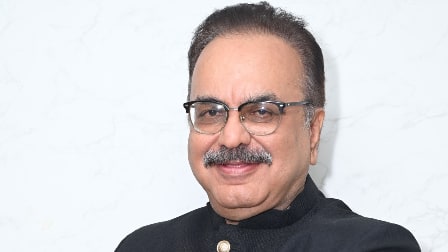India, the world’s pharmacy, must now become a pharma powerhouse. With $55B market growing to $130B by 2030, the focus must shift to innovation—via R&D hubs, clinical trial infra, GCCs, shared labs & policy support—linking discovery, development & delivery globally.

Anil Matai, Director General, OPPI
India’s pharmaceutical sector has earned global recognition as the pharmacy of the world. We supply high-quality medicines to over 200 countries and contribute significantly to global health security. While this scale is impressive, the next frontier lies in innovation. To be able to discover and deliver next-generation therapies, we need a robust, future-ready infrastructure that can support pharmaceutical innovation at a transformative level.
The Indian pharmaceutical market is currently valued at around US$55 billion and is projected to grow 2.2 to 2.4 times by 2030, reaching US$120–130 billion. This will increase India’s share of the global market to nearly 5% by 2030. Supporting this momentum is a robust industrial backbone, comprising over 10,000 manufacturing facilities, more than 3,000 pharmaceutical companies, and ~650 US FDA–approved plants.
In recent years, Global Capability Centers (GCCs) have emerged as another strategic asset, offering a range of services including advanced data analytics, regulatory support, and even AI-driven drug discovery for global majors. This foundation is enviable, but to translate it into cutting-edge innovation, India must strengthen the entire ecosystem that underpins pharmaceutical research and development.
Learning global lessons
Global experience shows us what this ecosystem looks like. Singapore, for example, shows how infrastructure can accelerate pharma innovation. The Tuas Biomedical Park offers plug-and-play facilities that cut lead times for manufacturing, while Biopolis at One-North brings together research institutes, incubators, and global pharma companies in a shared R&D hub, lowering entry barriers and speeding discovery to application. Similarly, the UK government has launched a 10-year mission as part of its Industrial Strategy to grow its life sciences sector. The plan includes explicit attention to medicine manufacturing, R&D infrastructure, and connecting innovation with the NHS. The goal is to distribute growth across the country, not just in specific areas.
India can adapt these lessons to its strengths. We already have international credibility thanks to our growing GCC base, scientific expertise, and manufacturing size. We now need to invest intentionally to connect these skills so that discoveries made in labs can easily reach patients, be produced, and go through trials.
Driving transformation
A few priorities stand out for realizing this potential. Start by entering tier 1 and tier 2 markets outside of metro areas. Decentralized, well-planned clusters are essential, as demonstrated by global centers like Singapore and the UK. Enhancing biotech and pharmaceutical parks outside of India's big cities would not only lessen regional inequalities but also build a larger talent pool and local ecosystems that can sustain ongoing research and development.
Second, our clinical trial infrastructure must expand with streamlined approval systems, interoperable data platforms, and biobanks that reflect India’s unique genetic diversity.
Third, GCCs must be nurtured through incentives and a clear data governance framework so they continue to attract high-value R&D mandates from global headquarters.
Fourth, invest in a shared research infrastructure. National resources that are accessible to industry, academia, and start-ups should include elite labs, biobanks, clinical trial facilities, and digital health platforms. This reduces redundancy, lowers costs, and expedites the process of transforming research into marketable goods. Finally, align policy and financing with infrastructure goals. Utilizing the potential of partnerships would require more robust incentives for R&D investment, innovative public-private partnerships, and regulatory changes that speed up trials and approvals. Just as the UK has linked its life sciences growth with the NHS, India too must embed innovation into public health priorities, enabling not only exports but also domestic health security.
If the last few decades established India as the world’s pharmacy, the next decade must position us as the world’s pharma powerhouse. Infrastructure will be the backbone of this transformation. India can usher in a new era when pharmaceutical innovations are created locally for the benefit of the entire world by consciously investing in ecosystems that link discovery, development, and delivery.
Empower your business. Get practical tips, market insights, and growth strategies delivered to your inbox
By continuing you agree to our Privacy Policy & Terms & Conditions
